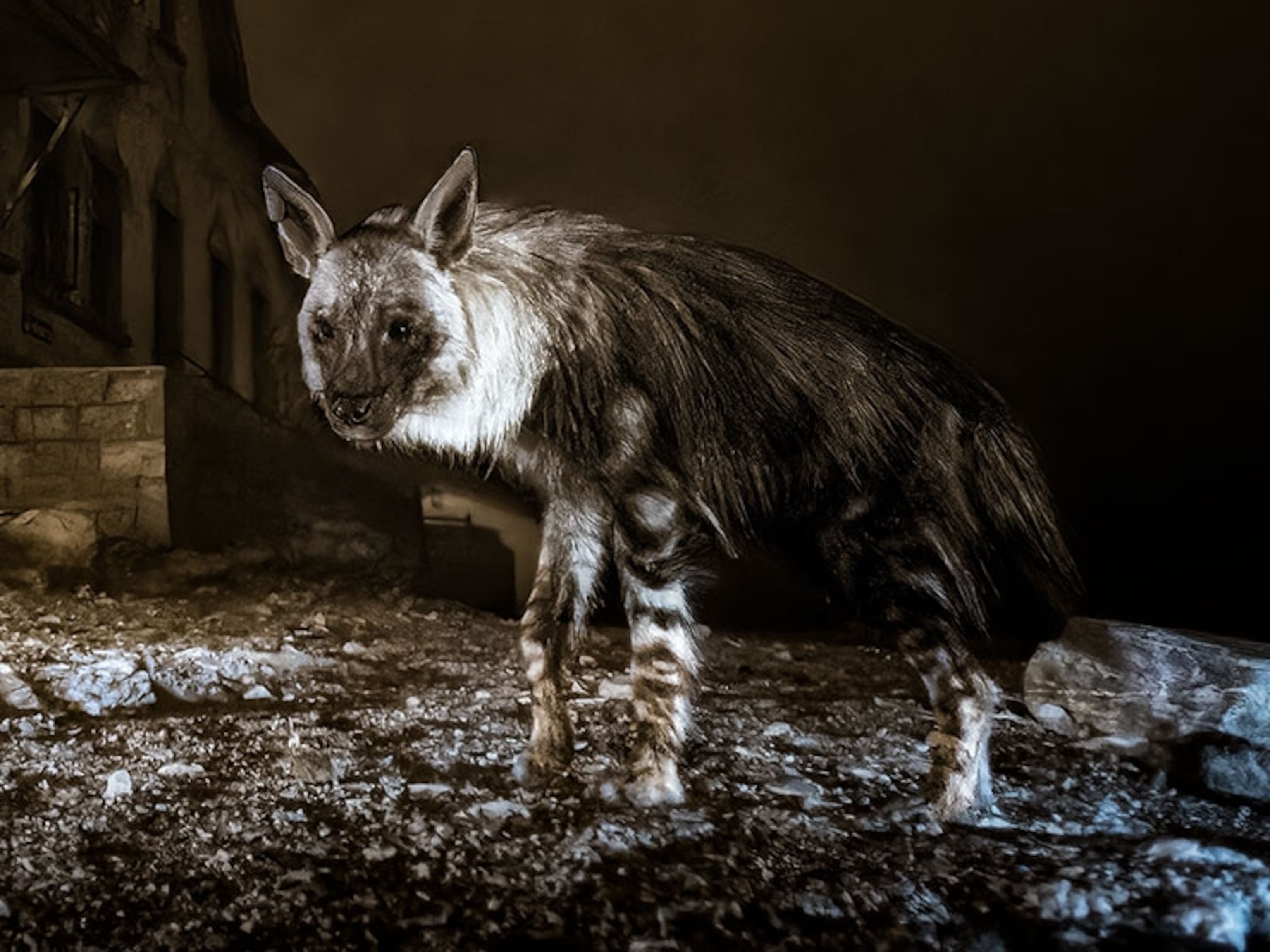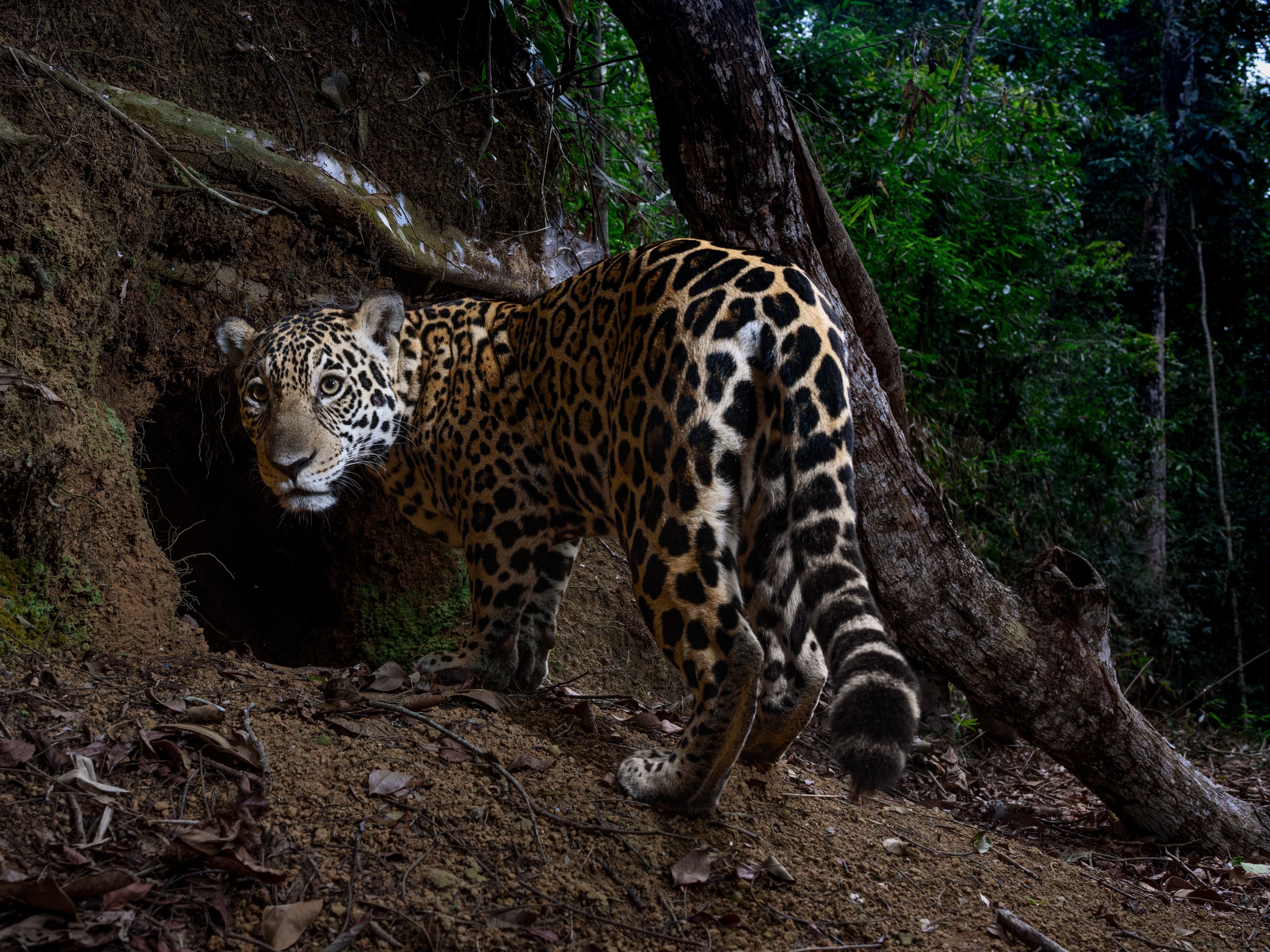
See the year's best wildlife photos
National Geographic contributor Karine Aigner earned top prize for her photo of mating cactus bees in Texas.
In southern Texas, cactus bees hatch underground in tiny, pollen-stocked burrows. Males emerge first, and then wait above for the females, which they mob as soon as their heads peek above the soil.
The writhing ball of mating bees is “something people don’t often see,” says Karine Aigner, a Washington, D.C.-based photojournalist and regular National Geographic contributor.
A lot more people will see it now, though. Aigner’s photo, taken in the spring of 2021, has earned her the coveted title of Wildlife Photographer of the Year—an annual award given out by the Natural History Museum in London. (See last year’s winning images.)

Unlike many of her other projects, Aigner came upon cactus bees by accident, while driving around a Texas ranch. In fact, when she first saw fuzzy balls on the ground, she mistook them for anthills. But the more she learned about the native pollinators and their life cycle, the more obsessed she became.
Her cactus bee photography “solidified for me how intricate nature is, and how much we disrespect the intricacy of everything around us,” says Aigner. “So I wanted to show sort of the personalities of these things that people call bugs.” (See close-up pictures that reveal the beauty of bees.)


Natalie Cooper, a senior researcher at the museum and member of the selection jury, described Aigner’s winning shot as “a beautiful, dynamic image at a scale we often overlook.”
“The violence and aggression displayed by these male bees is more intense than that seen in big cats on the African savannah, and all taking place right under our noses,” says Cooper.
It was a good day for Aigner, who also took home the prize for the Photojournalist Story Award for an image featured in a National Geographic story profiling Cuba’s captive songbird competitions.


As with the bees, Aigner says she hopes to make people think differently about the birds being captured for the pet trade.
“These are wild animals with wild lives, and their own biographies, and their own families and communities,” says Aigner. “And I want people to pay attention to that fact and start to think about the things we do that we actually don’t need to be doing.”
Another National Geographic photographer won accolades at the ceremony as well. Brent Stirton’s image of a mountain gorilla’s dying moments earned him the award for the Photojournalism category.




Stirton met the gorilla, named Ndakasi, in 2007, after her mother was killed under mysterious circumstances in the Democratic Republic of Congo’s Virunga National Park.
After being orphaned at just a few months of age, Ndakasi spent the rest of her life in the care of the Senkwekwe Mountain Gorilla Center. Fourteen years later, Stirton was there again when Ndakasi passed away in the arms of her long-time caregiver, Andre Bauma.

“I am always intrigued at the potential for communication and understanding between humans and animals. I think we are only scratching the surface of that,” Stirton says by email while on assignment for National Geographic in India.
“Seeing the depth of relationship that existed between Andre and Ndakasi only reinforced that for me.” (Read more about Ndakasi and the conservationists who fought to save her.)
Photographers don’t always get the luxury of returning to a subject. However, Stirton has traveled back to Virunga National Park several times as the region continues to contend with paramilitary groups and poachers. With just around a thousand mountain gorillas remaining in the Congo, Rwanda, and Uganda, the endangered primates are often trapped in the middle of the conflict.
“Issues in Virunga have only become more intense, and the public needs to appreciate the extraordinary work these people do to preserve global wildlife heritage in the most difficult of circumstances,” he says.
“People like Andre Bauma and the ranger force of Virunga deserve more attention.”






